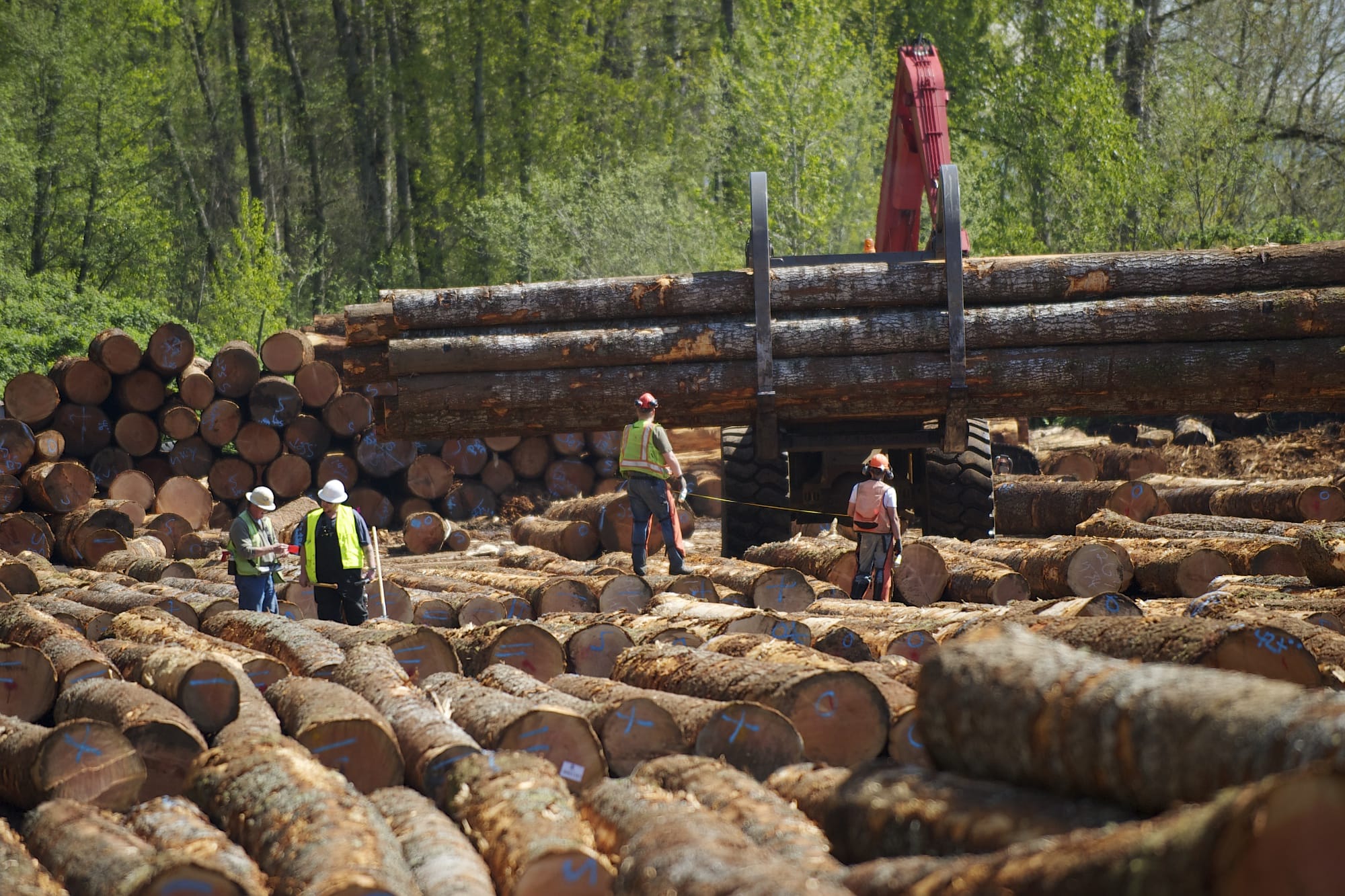A significant uptick in local logging is fueling bigger timber harvests in east Clark County than some residents say they’ve seen in decades.
Harry Barber sees the result in the form of log trucks rumbling past his home on Southeast Washougal River Road, outside of Washougal. He estimated anywhere from 10 to 20 trucks roll by daily.
“They’re logging it hard,” Barber said. “It’s extensive. I’ve never seen anything like it, and I’ve lived up here 40 years.”
Several factors are driving the increase, according to timberland owners and industry officials, much of it in the past two years. Favorable market conditions have provided better incentive to harvest, said state Department of Natural Resources spokesman Bob Redling. And in east Clark County, forestland that had been widely logged in the middle of the 20th century is now ripe for another round of cutting.
“A lot of it’s coming to maturity, and the market’s pretty good right now after not being very good for a long time,” Redling said.
The increased logging may bring a mixed bag of impacts to the Washougal River and its tributaries. Less forest cover will cause water to “flash” off hillsides more quickly during heavy rain or flood events, said Tony Meyer, executive director of the Lower Columbia Fish Enhancement Group. It could also cause more landslides and sediment going into the river system — which may actually be a good thing, he said.
The Lower Columbia Fish Enhancement Group has tackled numerous restoration projects on the Washougal River system aimed at improving habitat that was largely scoured out by early logging practices in the area. New material may help accumulate coarse sediment and gravel that make good spawning beds for fish, Meyer said.
In some places, “we need the gravel supply,” he said.
Major increase
Much of the timberland in Clark County is owned by either DNR or Weyerhaeuser, one of the region’s largest private owners.
From 2011 to 2012, total timber harvested in Clark County jumped from 58.6 million board feet to 68.5 million board feet, according to DNR. Neighboring Skamania County also saw a large increase. Meanwhile, the overall timber harvest in Washington dropped slightly during that time, according to DNR.
Final timber harvest numbers are not yet available for 2013.
Most of Clark County’s timber has come from state-owned land in recent years. In 2011 and 2012, Clark was the only county in western Washington that saw more timber harvested from public land than private land, according to DNR.
Weyerhaeuser also has contributed to the recent activity by logging land that it acquired when the company bought Longview Timber and its holdings last year. That includes several parcels in east Clark County near the Washougal River system, north of Washougal River Road. But Weyerhaeuser spokesman Anthony Chavez didn’t characterize it as anything out of the ordinary.
“We conducted some planned harvests in that area as part of our normal course of business,” Chavez said.
Residents who have grown accustomed to seeing more frequent log trucks in the area likely won’t see them disappear anytime soon. Additional logging there is expected into the summer months and later this year, Redling said.




